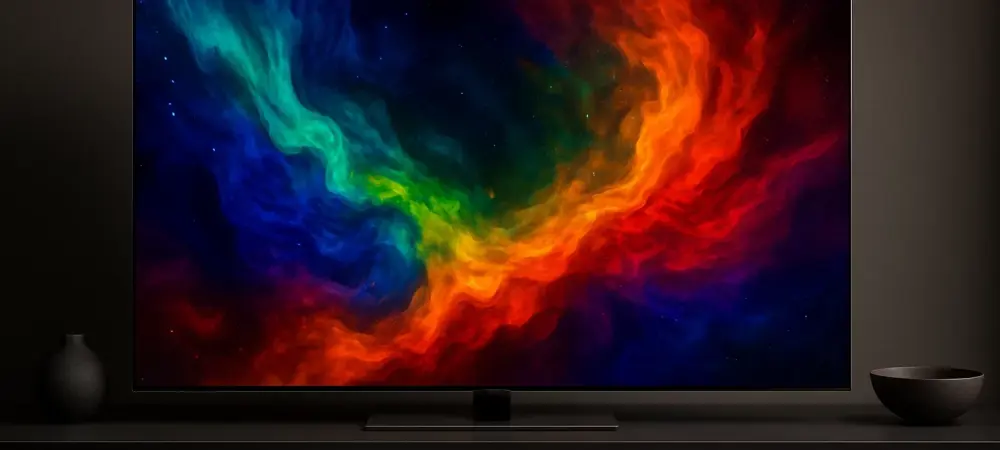As the world of OLED technology progresses, competition between leading manufacturers intensifies, shining a spotlight on specific performance features that distinguish top models. Among these, screen reflection handling remains pivotal. The challenge posed by reflections on OLED screens—due to inherent lower brightness and glossy coatings—affects viewing experiences significantly, particularly during dark sequences. This article embarks on a detailed exploration of the capabilities of two prominent OLED televisions, Samsung S95F and LG G5, dissecting their approaches and effectiveness in mastering this issue.
Evolution of OLED Screen Technologies
Samsung’s Innovative Approach
The journey of Samsung’s OLED revolution took a defining turn with its introduction of the Samsung S95D in 2024, featuring the groundbreaking Glare-Free screen technology. This marked a departure from traditional OLED configurations by enabling the viewing of darker movies under brighter conditions without significant degradation. Yet, the compromise involved in this advancement surfaced in the form of reduced black levels and shadow detail, resulting in the dreaded “black crush” phenomenon. Samsung’s successive model, the S95F, harnessed Glare-Free 2.0 technology, further refining reflection handling while addressing prior shortcomings.
LG’s Consistent Philosophy
LG’s lineage of OLED TVs—exemplified by models like the G4—continued to prioritize outstanding black levels and shadow details through the retention of glossy screens. By focusing on maintaining depth and detail in darker visuals, without succumbing to the implications of black crush, LG carved a niche in the OLED landscape. Progressing to the LG G5, the brand embraced an enhanced anti-reflection technology, seeking to compete effectively against screen glare, while preserving the integrity of OLED’s hallmark image quality.
Head-to-Head Performance Analysis
Bright Environment Testing
When evaluated in environments with significant ambient lighting, both the Samsung S95F and LG G5 demonstrated commendable levels of brightness, proving adequate in mitigating mirror-like reflections—even under settings like Filmmaker Mode, which prioritizes accuracy over brightness. The onset of divergence between these models became evident when viewing content primarily composed of darker elements. In testing with the film “The Batman,” known for its low-brightness scenes, Samsung S95F delivered superior performance in effectively managing reflections. Evidently, the Glare-Free 2.0 screen transformed overhead light reflections into a subtle haze, allowing the viewer to remain immersed in the scene’s details.
Dark Sequence Handling
Switching both models to their respective Movie modes in more brightly lit settings, LG’s G5 showed notable improvement in rendering dark scenes with enhanced discernibility. However, this was achieved at the expense of marginally elevated black levels. Conversely, Samsung’s S95F, when set in Movie mode, exhibited a remarkably clear portrayal of “The Batman,” reinforcing its dominance in challenging lighting scenarios. The analysis continued under extreme conditions spotlighting the screens in a dark environment, scrutinizing their direct reflection handling capabilities. Again, Samsung’s OLED demonstrated versatility through its anti-glare design, reducing focused light reflections to softer hazes, thus preserving screen integrity.
Comparative Reflection Handling Tests
Delving Deeper into Reflection Control
Intense evaluation of how these TVs performed under direct spotlight reflection tests confirmed Samsung’s lead in diminishing discrete reflections. The S95F showcased its anti-glare attributes effectively by rendering spotlight reflections as less detectable hazes, maintaining a consistent screen tone. In contrast, LG’s G5, equipped with a competent anti-reflection screen, proficiently controlled light diffusion, yet the distinct presence of spotlights was slightly visible, impairing its reflection handling capability.
Reconciling Black Level Performance
Testing involved scenes such as those from the classic “Nosferatu.” Samsung’s model excelled in areas burdened by excessive ambient light by nearly annihilating mirror-like reflections, offering prime clarity for dark-centric films. Despite its prowess in reflection management, Samsung S95F’s slight deficiency in black level depth led LG G5 to outperform it, revealing profound inky blacks even when exposed to brighter surroundings. In sequences from the musical “Wicked,” both televisions delivered acceptable black levels; however, LG’s G5 offered more depth and texture, accentuating subtleties like Elphaba’s dress details.
Conclusion: Evaluating User Preferences
As OLED technology advances, leading manufacturers find themselves in fierce competition, which highlights specific performance features that set apart the top models in the industry. Notably among these features is how well OLED screens handle reflections—a key factor affecting overall viewing experiences. Reflections pose a particular challenge because OLED screens typically have lower brightness levels and glossy coatings, which can interfere with visual clarity, especially during scenes with dark lighting. Against this backdrop, this examination delves into two leading OLED televisions, the Samsung S95F and the LG G5. By assessing their methodologies and effectiveness, this analysis aims to distinguish how each manufacturer addresses the nagging issue of screen reflections. As consumers demand superior viewing quality, the strategies these manufacturers employ to mitigate reflections not only influence the watching experience but also define their standing in the competitive OLED market.

